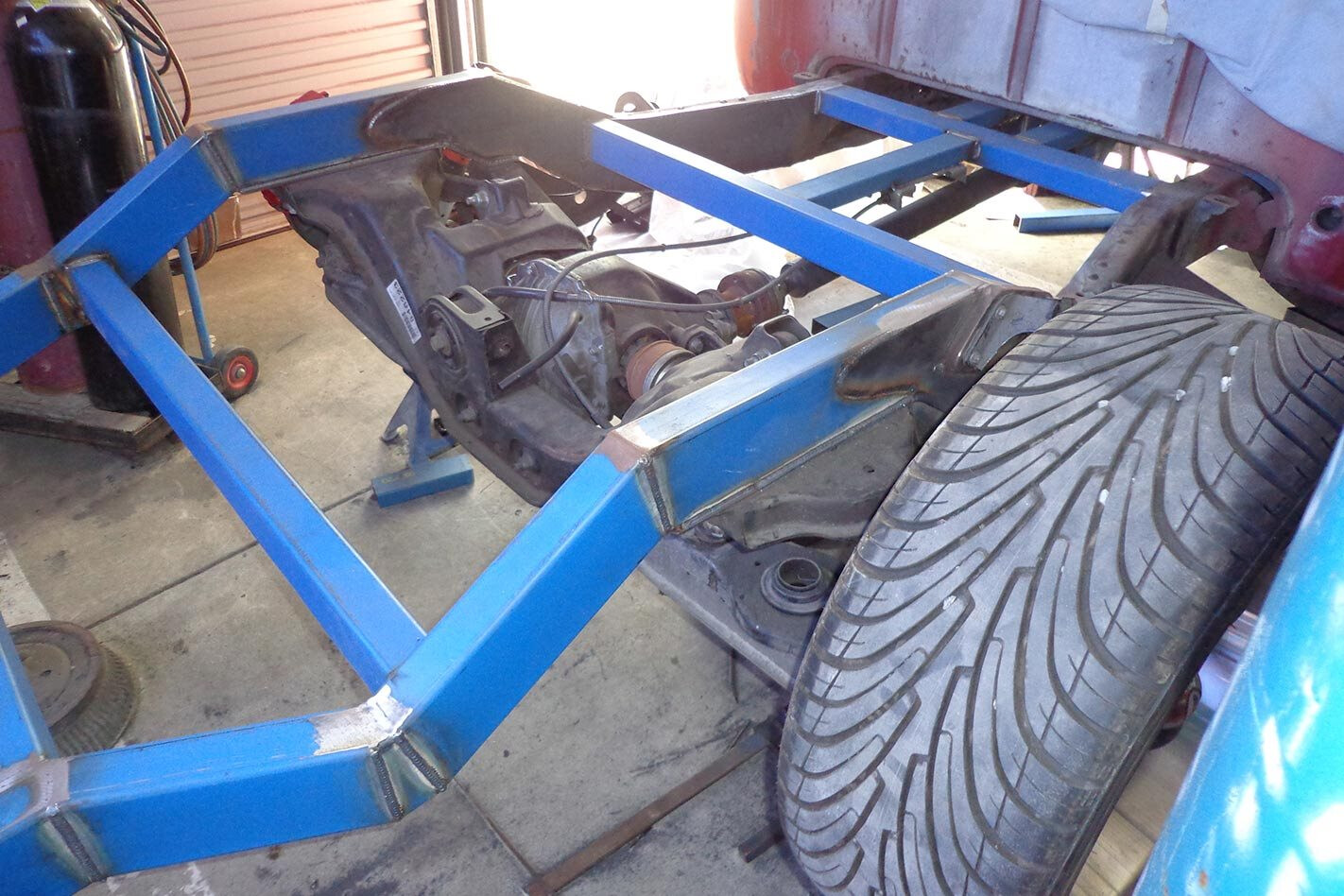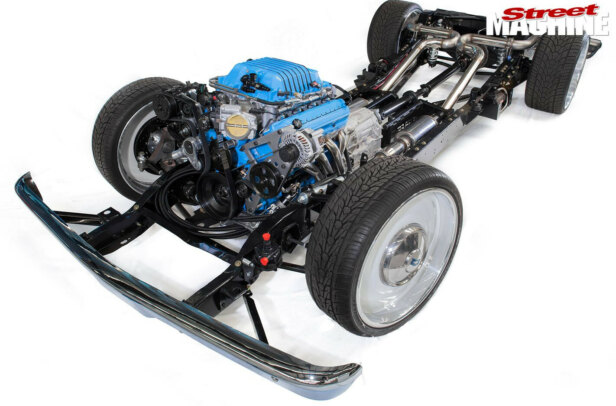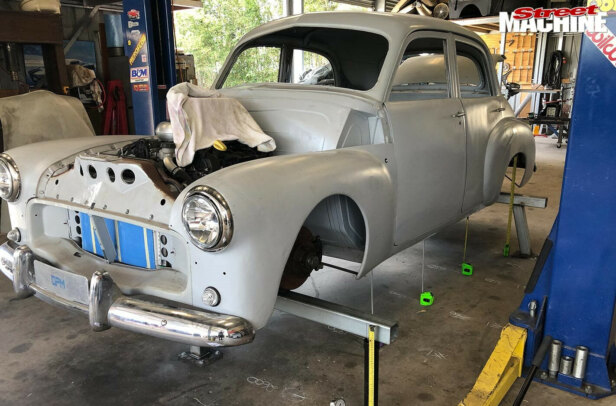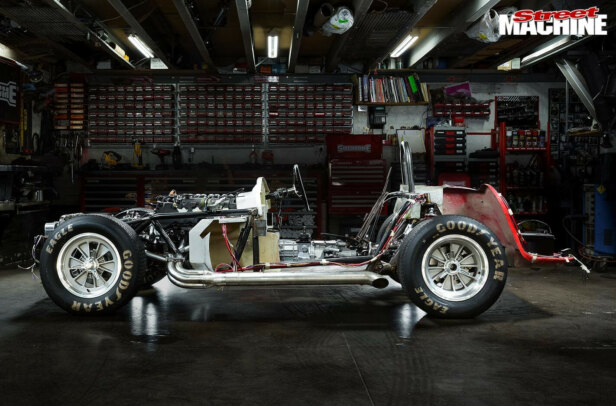ENGINEERS use the National Heavy Vehicle Code as their guide for light-vehicle chassis building or modification, tailoring the Code’s rules to suit light vehicle design. This is because truck chassis are regularly modified for change of purpose, and the key aspects of doing this are well sorted out from prior practical performance and millions of miles of real-life use.
When chassis members are joined as part of a graft or in building a new chassis, the joints should be made at 45 degrees. This maximises the length of the weld and puts the angle of the weld in the lowest stress plane when the chassis is doing its job in torsion. By comparison, welds at 90 degrees have the shortest length and act as stress raisers in the chassis, which can lead to cracking that then travels straight up the chassis, ending in a possible failure.
FISH PLATES
THE truck code also requires fish plates to be fitted over joints. This is a kind of insurance policy to ensure that the stress on the welded joint in the parent part of the chassis is minimised and crack propagation is prevented. Fish plates should be fitted both inside and outside the chassis, or on both sides of a tube if that is the parent material.
Fish plates should be cut each end at a 45-degree angle, or as ‘spears’. This is to ensure that there are no full vertical welds on the chassis that can propagate cracks.
A general rule for fish plates is to not use a thickness greater than 1.5 times that of the parent material. Otherwise thick material is welded to thin material, increasing stress that can lead to cracking at the weak point and adjacent to the weld in the weld-affected zone.
The truck code has quite fixed rules about the length of fish plates, but for light motor vehicle modifications I recommend a minimum length of three times the chassis depth.
For elite street rods and show cars, fish plates can sometimes be cleverly installed inside the cross-section of the chassis, as shown in photos 1-3, where the plates were welded into the joint sections and then plug-welded to provide the security that engineers want. This arrangement can then be flushed off for an elite finish.
TRANSITIONS
Another important principle for good chassis construction, modification or repair is to minimise sudden changes in section. When an engineer talks about change of section, it refers to the difference in cross-section between two members that are either joined, combined or offset in a chassis. In everyday use, a chassis will bend and twist in normal operation, so if there’s a sudden change from a low-stressed area to a high-stress zone, that’s where unusual performance occurs, resulting in a stiff section meeting a sloppy section. How will a chassis like that handle on the road? It’ll be unpredictable and be susceptible to failure where one member flexes while another is rigid. We call it a stress raiser.
Take a look at the main photo (above) and you’ll observe a good chassis builder at work. Look at the rebated joint where the rear section of the chassis meets the front section; the crossmember joins into the act and then transitions to the front rectangular rail. This is a nice transition of section with plenty of weld, and, even though it has a vertical weld, it has fish plates and an outrigger bracket for extra support in that area.
Compare this photo, where we see a rapid change of chassis width and a vertical format joint. It’s far from ideal. It is important for modifiers who are stepping chassis rails in at the rear for big wheel clearance to make the transition in the step as gradual as possible. It’s not hard to do and the end result looks and performs better. People do notice good engineering!
WRONG WAY!
Fabricators who are building chassis must be competent, due to the critical nature of what they are doing. Joints need to be thought through, and cuts need to be accurate so that edges are able to butt together tightly and weld preparation can be carried out on material edges to maximise weld penetration. We’ve all seen work like that shown in photo 4, and it should not be condoned. This kind of fabrication may look all right when it’s all ground flush and finished, but it will ultimately crack and lead to poor performance.
This photo shows another way to deal with the issue of vertical welds. Stitch-weld the gusset instead, add some seam sealer and the job is done. Another way is to angle the gussets at 45 degrees and fully weld the legs of the gussets along the low-stress plane.
SAFETY FIRST
THE reason engineers want everything to be perfect is because of our liability as certifiers. But really, we just want to help you build a better vehicle, and I know that perfection comes with experience. If you’ve learned something, that’s great. Go out and use it!
The thing to note is that, if you are planning a major graft, new chassis construction or a big repair job that you want legally certified, you need to have your certifier involved from the beginning. No engineer wants to arrive to a finished job where it is not possible to review what has been done. The liability risk is too high and not practical.




Comments